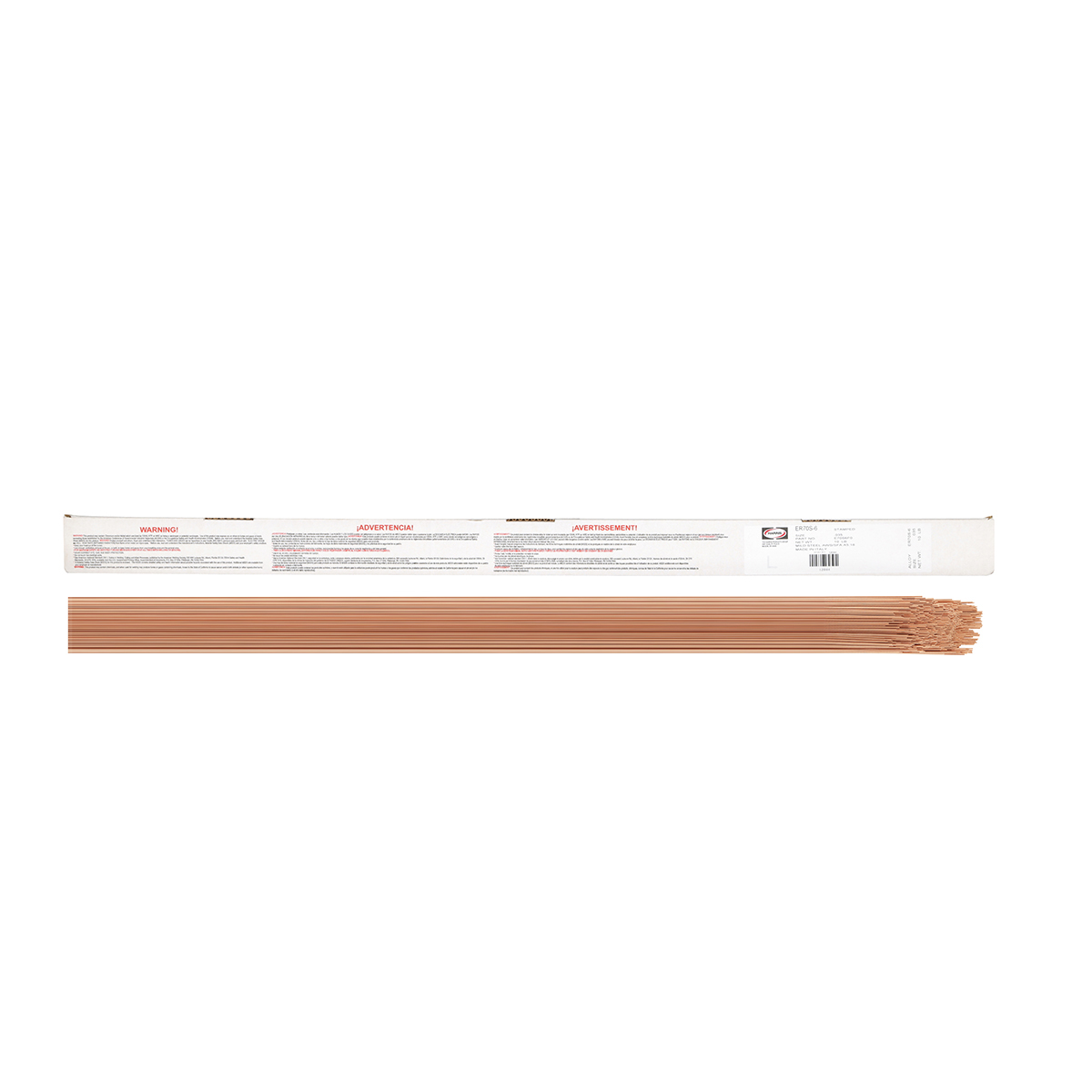1/8" X 36" ER70S-6 Harris® Carbon Steel TIG Rod 10 lb Box
Airgas Part #:HARE70S660
Manufacturer Part #:E70S660
Log in to get your price
$4.45
US Pound
$4.45
/US Pound
Get comparable value & performance
Item Details
- Harris® TIG (GTAW) ER70S-6 1/8" Dia X 36" Carbon Steel TIG Welding Rod comes in a 10 lb box. This mild steel welding alloy contains more deoxidizers than ER70S-3. Thus, yields better wetting for a flatter bead shape and the capability of faster travel speeds. A general-purpose welding rod for fabrication of mild steel and used primarily for multiple pass on steels where rusty and dirty surfaces are not cleaned before welding. Conforms to AWS A5.18 ER70S-6 standards.
Features
- A general purpose TIG welding rod for fabrication of mild and low alloy steel
- Contains high levels of silicon and manganese as deoxidizers
- Excellent wetting action and more puddle fluidity yields a smoother bead appearance and the capability of faster travel speeds
- Primarily used for multiple pass on steels with rusty or dirty surfaces that are not cleaned prior to welding
- All position welding
- 80,000 - 90,000 psi tensile strength (depending on shielding gas used)
- 65,000 - 75,000 psi (depending on shielding gas used) yield strength
- Uses DCSP polarity
Specifications
- AISI/AWS/ASME SFA 5.18 ER 70S-6
Applications
- Automobile repairs
- Construction
- DIY and home projects
- Fabrication of mild and low alloy steel
- General repair work
- Root pass pipe welding
- Sheet metal work
- Small diameter pipe and tubing
Caution
- WARNING: PROTECT yourself and others. Read and understand this information.
- FUMES AND GASES can be hazardous to your health.
- ARC RAYS can injure eyes and burn skin.
- ELECTRIC SHOCK can KILL.
- Before use, read and understand the manufacturer's instructions, Material Safety Data Sheets (MSDSs), and your employer's safety practices.
- Keep your head out of fumes.
- Use enough ventilation, exhaust at the arc, or both, to keep fumes and gases from your breathing zone and the general area.
- Wear correct eye, ear, and body protection.
- Do not touch live electrical parts.
- See American National Standard Z49.1, Safety in Welding, Cutting, and Allied Processes, published by the American Welding Society, 550 N.W. LeJeune Road, Miami, Florida 33126: OSHA Safety and Health Standards, available from the U.S. Government Office, Washington, DC 20402.
Product Attributes
Length
» 36"Trade Name
» Harris®Weight
» 10 lbDiameter
» 1/8"AWS Classification
» ER70S-6





